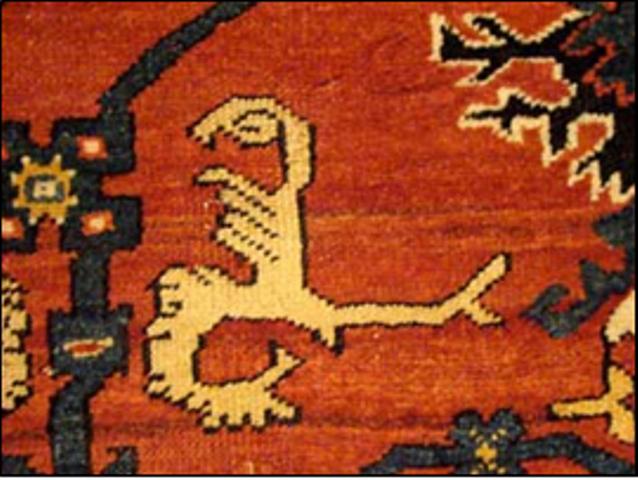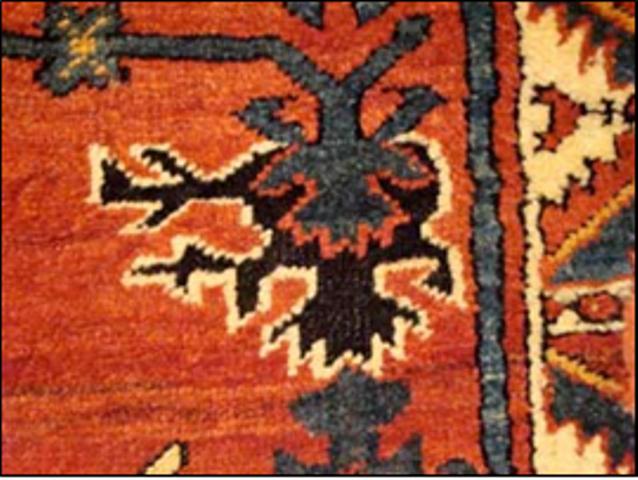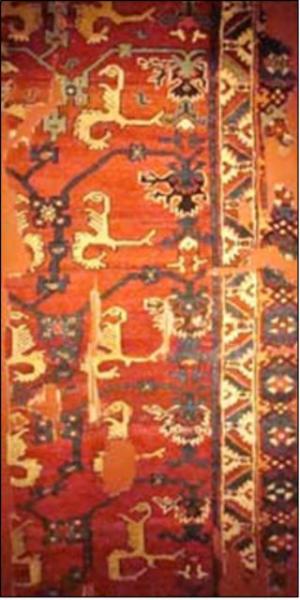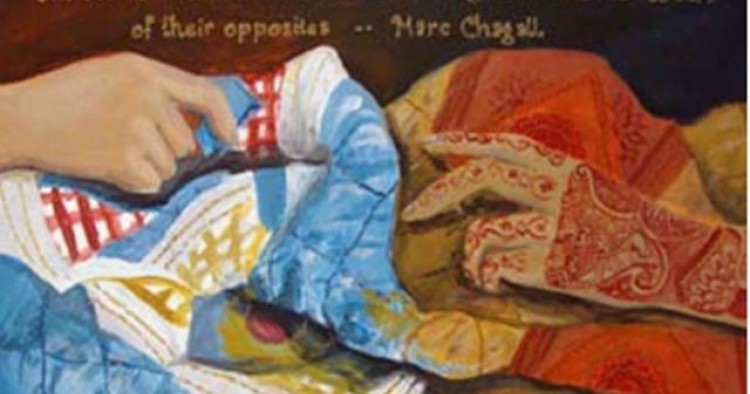Originally posted June 2011
In 2003, I had an amazing experience flying over islands in the Aegean Sea. I sat looking out the plane’s window feeling as if my journey were a kind of homecoming. My colleagues and I were traveling to Rhodes Island in Greece for a group presentation at a humanities conference. We stayed at a hotel on the edge of the island that looked across the sea to the Tauris Mountains of Turkey. I wanted so badly to take a boat to Maramis just to say I had set foot on Turkish soil but also to see some of the renowned architectural sites I had been teaching about in my various functions as an art education professor. Unfortunately, I did not visit Turkey on this occasion; instead, our little group satisfied ourselves with the wonderful sites of Rhodes.
 After attending Georgia State University Middle East Institute’s “Teaching the Middle East Workshop” in the fall of 2004, the participants were invited to the Istanbul Center for Culture and Dialogue for a Ramadan Iftaar. The director of the center, Kemal Korucu, greeted us as we entered the waiting hall, finely decorated with Turkish kilim carpets and Ottoman calligraphy. I was immediately impressed by the group’s gentility and kindness, as we were entertained and fed a sumptuous five-course dinner. This experience further fueled my desire to visit Turkey.
After attending Georgia State University Middle East Institute’s “Teaching the Middle East Workshop” in the fall of 2004, the participants were invited to the Istanbul Center for Culture and Dialogue for a Ramadan Iftaar. The director of the center, Kemal Korucu, greeted us as we entered the waiting hall, finely decorated with Turkish kilim carpets and Ottoman calligraphy. I was immediately impressed by the group’s gentility and kindness, as we were entertained and fed a sumptuous five-course dinner. This experience further fueled my desire to visit Turkey.
 Later that fall, I wrote a grant to support this travel opportunity. It was awarded through the incentive grant program from the Center for Teaching and Learning at Kennesaw State University (KSU). In the summer of 2005, I traveled with my good friend and kindred spirit, Jeanette Wachtman, through the major cities of Western and Central Turkey. During this trip, I fell in love with all things Turkish, particularly its rich historical and cultural content.
Later that fall, I wrote a grant to support this travel opportunity. It was awarded through the incentive grant program from the Center for Teaching and Learning at Kennesaw State University (KSU). In the summer of 2005, I traveled with my good friend and kindred spirit, Jeanette Wachtman, through the major cities of Western and Central Turkey. During this trip, I fell in love with all things Turkish, particularly its rich historical and cultural content.
Following my trip, I received a phone call from my older brother, Steve. As we talked, Steve mentioned that he had just taken a DNA swab test that indicated a certain genetic marker that related to my recent journey.
Steve: Did you know that direct-to-consumer DNA testing has become available?
Sandra: Well no, I did not…it’s not the kind of thing I tend to follow, you know.
Steve: Recently I decided to have my own Y chromosome profile made. One type of testing available identifies the subject’s membership in a “haplogroup,” or a tree branch of common descent from a particular male ancestor who lived in the distant past, based on something called a “SNP” (pronounced “SNiP”). Y chromosome SNPs are associated exclusively with the male line of ancestry, since the Y chromosome is passed on from father to son essentially intact, with only an occasional mutation to change the profile of the Y.
Sandra: What exactly is a “SNiP”?… this all sounds so academic.
Steve: Sandy, I am an academic…. (a pregnant pause)… “SNP” stands for single nucleotide polymorphism, a specific genetic mutation that has occurred in one precise location, some time in the distant past, that has been passed on to all living male descendants of the first common ancestor to have the particular SNP.
Sandra: Well, that’s all fine and good if you are male.
Steve: (Probably smiling in that “I’ve got you covered” kind of way that he does)…a similar SNP-based haplogroup exists for the all-female-associated mitochondrial DNA line.
Sandra: Oh…(slightly embarrassed).
Steve: Since our family surname, “Bird,” obviously was English and the genealogy for the Bird family was known to extend to the region of northwestern Essex county in England in the early 1600s, I fully expected our family male haplogroup to be identified as “R1b1,” the so-called “Western Atlantic Modal Haplotype” group associated with many people of English descent. But as I have learned, DNA testing is always full of surprises!
Sandra: What did you find out?
Steve: My male haplogroup turned out to be E1b1b1a2.
Sandra: No way…..(said with half of a smile).
Steve: (Continuing without the slightest attention to my tease) E1b1b1a2 is characterized by the SNP known as “V13.” This male haplogroup is found at its highest levels in the Balkan peninsula, where it can exceed 40% of the male popula- tion in some places, and is believed to have originated from Anatolia just prior to the earliest Neolithic era. By the early Bronze Age, V13 was well established in large numbers throughout the Balkans. Somehow, a male ancestor moved from the Balkans to the island of Britain for some unknown reason and carried the V13 marker with him!
In 2006 and 2007, Steve began to investigate possible migration routes from the Balkans to Britain and what vectors might have been responsible for the movement of V13 to Britain in low but significant numbers (about 2-3% of the present British population). His findings, relayed through an email correspondence, are as follows.
The result of that study was published in the Journal of Genetic Genealogy in Fall 2007[1] and traced the distribution of V13 among living Brits who have remained in their ancestral homes for several generations. The conclusion of this study was that V13 was in all likelihood introduced by Roman auxiliary soldiers from the Balkans who were stationed in Britain from the first to the fourth centuries, CE, and then remained upon their retirement to settle in those regions ofBritain associated with extensive Roman fortifications and the associated vici nearby. Their descendants remain today both in Britain and in America.
Steve went further to explain other discoveries:
 Subsequently, I had my mitochondrial DNA tested also, with the surprising result that both the paternal (Eb1b1a2) and maternal (J2b2) haplogroups emerged in Anatolia in the period prior to the Neolithic revolution. Both are associated with the earliest farmers and both eventually found their way to the British Isles. In the case of the maternal line, J2b2 is associated with certain populations found around Edinburgh, Scotland, where our mother’s maternal line was believed to have originated. Ironically, at the deepest level, our paternal and maternal lines originated from the same part of the world.
Subsequently, I had my mitochondrial DNA tested also, with the surprising result that both the paternal (Eb1b1a2) and maternal (J2b2) haplogroups emerged in Anatolia in the period prior to the Neolithic revolution. Both are associated with the earliest farmers and both eventually found their way to the British Isles. In the case of the maternal line, J2b2 is associated with certain populations found around Edinburgh, Scotland, where our mother’s maternal line was believed to have originated. Ironically, at the deepest level, our paternal and maternal lines originated from the same part of the world.
The images of the Anatolian carpet I have shared with readers have an interesting function for me, particularly as I begin to tell my story of the roots of the Istanbul Center contest. The interactions between these ancient protectors of the “Tree of Life” exemplify the power of opposites to protect and generate new life. Both sides seek to perform the same service (to protect life…to endure…to sustain existence) despite their differing origins and actions. The greater good of the tree is the focus of both positions.
Due to my interest in Turkish art and culture, Ferhat Demir (a KSU Business student and Istanbul Center for Culture and Dialogue volunteer) ap- proached me in 2006 for a potential slot on one of the “Dialogue” trips to Turkey that the Istanbul Center was developing. While I could not participate at that time, Ferhat also asked me if I would be willing to support the development of a new student group on our campus, devoted to dialogue among cultures. Eventually, this led to the establishment of the International Dialogue and Empathy Association (IDEA) student group, and Ferhat became “my Turkish son.” Was it my ancient Anatolian roots that made me open up to my long-lost Turkish relatives, or was I questioning the very idea of the “other” as one of the most ill-conceived notions to have plagued our earth? My brother’s genetic inquiries, as well as others performed by scientists analyzing mitrochondrial DNA leading back to African sources[2], indicate that we are much more connected than we generally tend to recognize. Science, art, and religion meet in agreement on this plane.
KSU IDEA was responsible for several activities that were similar to its “mother” group at the Istanbul Center, including a “Dialogue Dinner” to discuss the role of dialogue in peacemaking and a guest appearance of the Sufi performers, “Rumi Nights” in our university’s grand meeting room. That handful of Turkish students also asked me if I would be willing to judge an art contest that the Istanbul Center was in the process of developing. Such requests for adjudication come very frequently in my art education profession. I replied, ”Sure, I’ll do whatever you need.” I had no idea how important this contest would become.
1. Bird, S. C. (2007). Haplogroup E3b1a2 as a Possible Indicator of Settlement in Roman Britain by Soldiers of Balkan Origin. Journal of Genetic Genealogy, v. 3, (2): 26-46. Available online at: http://www.jogg.info/32/bird.pdf.
2. Lui, H., Prugnolle, F. Manica, A. & Balloux F. (2006). A Geographically Explicit Genetic Model of Worldwide Human-Settlement His- tory. American Journal of Human Genetics, August; 79 (2), 230–237.
The Middle East Institute (MEI) is an independent, non-partisan, non-for-profit, educational organization. It does not engage in advocacy and its scholars’ opinions are their own. MEI welcomes financial donations, but retains sole editorial control over its work and its publications reflect only the authors’ views. For a listing of MEI donors, please click here.













